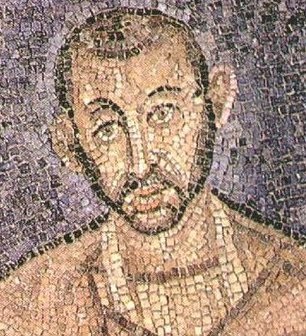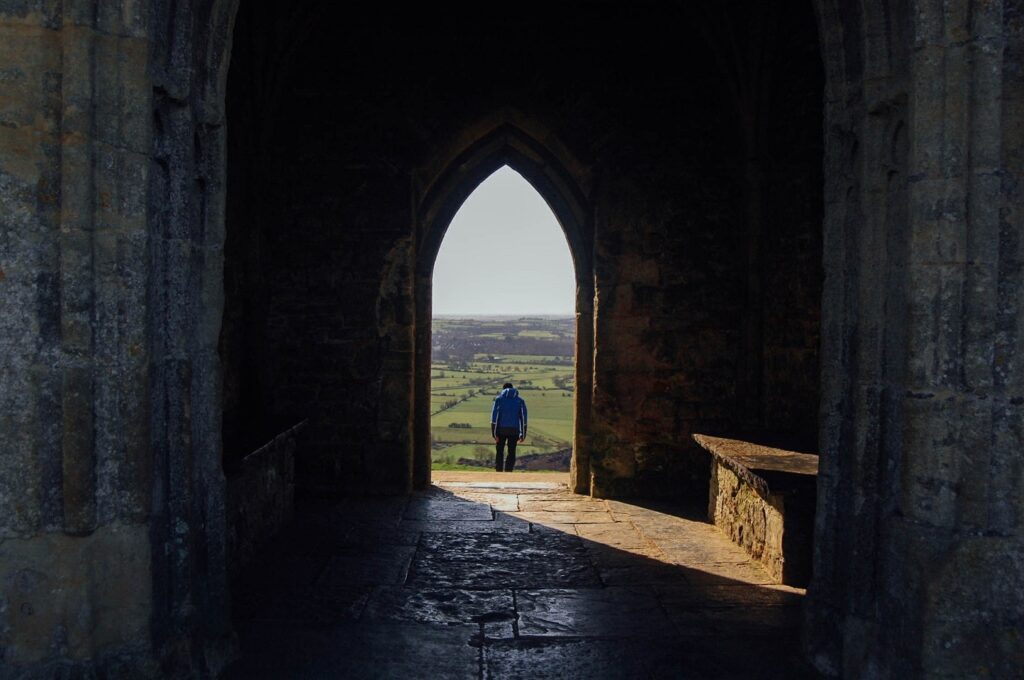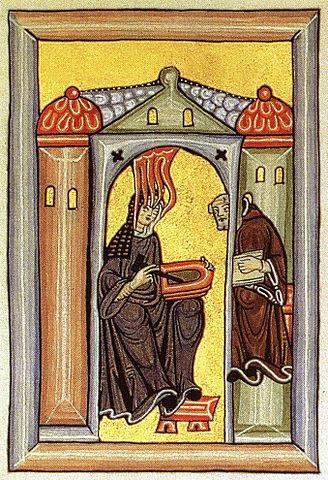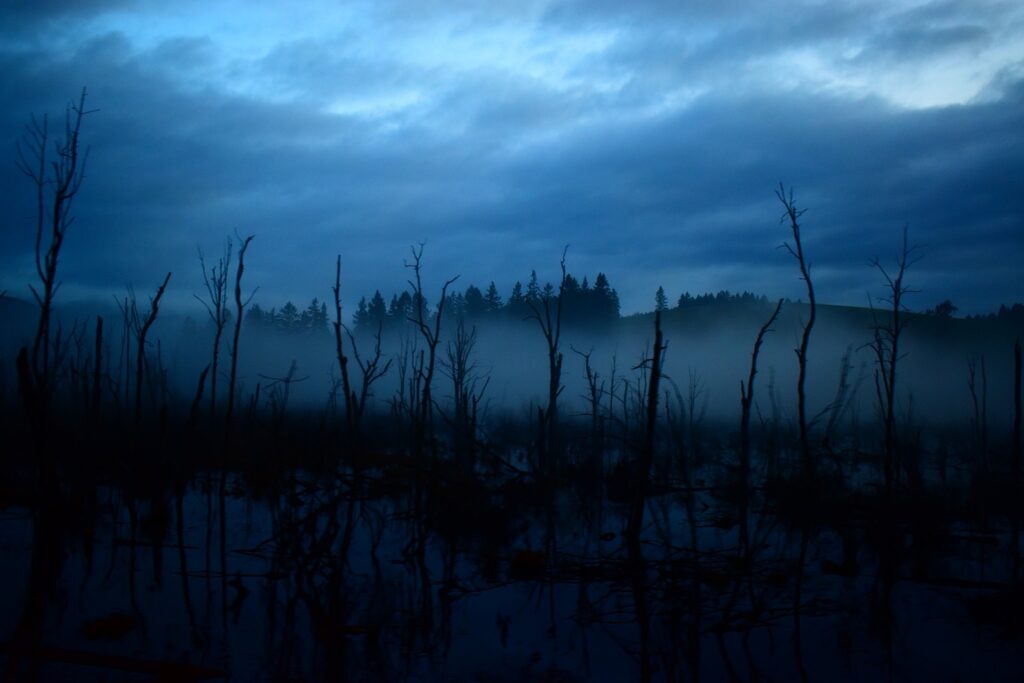Table of Contents
The Commissioning Consortium Process

Elaine Hagenberg’s Illuminare was initially financed and publicized through a group of choirs that formed a commissioning consortium in 2021. This type of support for a major musical work is a classic case of a win-win situation. The composer can offer a way for groups to share the financial cost of a commission and is also assured of a certain number of performances right off the bat. The choirs are able to share in the project at a lowered cost without any diminution of quality. Indeed, for Illuminare, a 24-minute orchestrated piece, the cost-sharing aspects surely made the commission as a whole possible, as it would have been difficult for any one choir to undertake the financial burden of such a long work. All of the consortium choirs get to participate in the excitement of a performance premiere and (possibly) have the composer present. My own choir, the Cherry Creek Chorale in the Denver area, was privileged to have Ms. Hagenberg on board for our final rehearsal. The composer was a full collaborator that evening, listening and critiquing gently but firmly.
Illuminare was made available for sale in August 2022 and is now being performed widely. It’s always helpful, I think, for choir members to know a little about the origins of a work. I therefore contacted all ten directors/conductors of the consortium choirs, asking how their groups had gotten involved with this project. The gracious replies I’ve received were delightful; I’m sorry that I can’t quote all of them in full. What has been clear from these responses is the importance, and the mystery, of human relationships. I’ve felt as I read the snippets of information I received about Illuminare as if I were getting mosaic tiles that I could fit together into some type of coherent whole.
Very typical comments from others in the consortium: “I had talked with Elaine . . .” “Elaine contacted us . . .” “We had worked with Elaine in the past . . .” “Elaine brought up the consortium, which I JUMPED AT!” The American Choral Directors Association was mentioned, as well as workshops with individual choirs. In other words, the composer wasn’t someone scribbling away in a garret all day who then took the finished manuscripts and threw them out the window in the hope that someone would see them. I’m reminded of something John Rutter said in a video about his composition process: that he writes mainly commissioned pieces, as he sees no point in writing something that’s just going to sit in a drawer and never be performed.
But the question still remained: whose idea was this whole thing anyway? As I read further in the information I received it became clear that the impetus had come from the composer herself, who had been thinking for some time that she’d like to create a longer, multi-movement choral work. There was an “invitation letter” sent to some of the directors who ended up participating, probably to those who had worked directly with Ms. Hagenberg in the past. Here is part of that letter, shared with me by one participant:
This work will be narrative in nature, exploring themes of distress and turmoil transforming to hope and peace. . . . Texts will be sacred Latin with possible English texts as well. . . . I’m eager and inspired to use lesser known hymn texts from centuries ago. These powerful texts are rich and descriptive–steeped in beauty and offering hope. Then my aim is to create an inspirational work relevant to our generation and current culture.
The above leads to a further question with a many-branched answer: How do text and music, especially sacred music, intertwine? There are so many ways that this combination can happen. Bach, Mozart or Verdi, for instance, sitting down to write a Roman Catholic Mass, had the texts already to hand. (Bach’s B Minor Mass is indeed Roman Catholic even though he himself was a Protestant. There’s a fascinating story behind that composition which I can’t get into now.) On the one hand those composers were relieved of the responsibility of finding texts; on the other hand they were limited by them. One positive aspect of writing this type of music set to predetermined texts would have been that the composer had a built-in performance venue, especially if he were writing as an employee of a specific church. He might even get to direct his own composition using the church choir. It can make for a cozy arrangement.
The situation is quite different today, of course, with most composers choosing their own texts, having them written specifically for them, or writing the texts themselves. Ms. Hagenberg fits squarely within that first category, and she has obviously read widely in the “lesser known hymn texts” mentioned in her words above in order to come up with the selections that she used. And note especially her words “narrative in nature”—the texts cover an arc, moving from light to dark and back out to light. She told my choir that she’d had maybe a couple dozen possible texts, all printed out on different sheets of paper, and she spread them all out on the floor as she went through the final winnowing process. That description gave us a rare glimpse into her creative process.
Ms. Hagenberg isn’t a newcomer to composition; her first piece, an arrangement of the Shaker hymn “I Will Be a Child of Peace,” came out in 2013. Her explanation of how she got started with publishing her works is quite intriguing; she says that she developed a real interest in composition and decided to start sharing her works with conductors and sending in her work to music publishers. I’m not sure exactly how the music publishing world works, but the book publishing business is known for leaving unsolicited manuscripts in the infamous “slush pile,” there to languish. However, note that Ms. Hagenberg wasn’t just blindly sending in her work; she was also “sharing her works with conductors.” While she doesn’t go into detail about this whole process, I see some clues in her career. She graduated from Drake University in Des Moines, Iowa, and is now a composer-in-residence for the Des Moines Choral Society under the direction of Dr. James Rodde. She’s also sung with this choir for a number of years. Not surprisingly, the Des Moines Choral Society is a member of the consortium, and Dr. Rodde had this to say about his choir’s participation:
Producing a multi-movement work had been on Elaine’s mind for a few years… we had talked about it and how/when it might be able to happen, at first with the Des Moines Choral Society. The consortium idea grew out of those discussions.
Dr. Rodde was almost certainly one of those conductors with whom Ms. Hagenberg shared her early work. Not only is he the DMCS director; he also holds an endowed chair and is in charge of choral activities at Iowa State University. It would make sense that he’d have had some practical suggestions about breaking into the choral music world along with some personal connections of his own. And he must have been eager to nurture her talent, since it’s hard to imagine Ms. Hagenberg’s becoming composer-in-residence of the Des Moines choir without his enthusiastic support.
One more point, and that’s the question of artistic freedom. A question I asked all of the consortium members was, “were there any guidelines given to Ms. Hagenberg about the music itself?” And the answer without exception was that she was given complete artistic freedom. The only musical discussion turned on length, around 20-25 minutes, and the use of a chamber orchestra instead of a full symphonic one so that more groups could participate.
Now for the texts themselves. As you read the following material you’ll note that my emphasis is not on the scholarly or the purely historical. What I want you to gain from it is a sense of connection, of recognition, of interest, by understanding and appreciating the words. There’s never enough time in rehearsals to learn the music itself, let alone have someone give 20-minute disquisitions on how canonical hours worked, say, or what the story is behind the “Canticle of Zechariah.” So I try to step in and fill that void with written material, rabbit trails and all. I hope, in the end, that you enjoy what you read and remember enough of it so that your performance is enhanced.
Suggestion for further reading/listening:
“How Iowa’s Elaine Hagenberg Became a Noted Composer”
“I Will Be a Child of Peace,” Hagenberg’s first published piece as mentioned above, being performed in an SSA arrangement, clearly in the time of COVID—a lovely version that’s in no way handicapped by masks and distancing. It ends a little abruptly for some reason:
Part One–“Splendor”

| Splendor paternae gloriae, | Splendor of the Father’s glory, |
| de luce lucem proferens, | From light, light is brought forth. |
| lux lucis et fons luminis, | light of light and fountain of light, |
| diem dies illuminans. | Day, all days, illuminates. |
St. Ambrose, 340-397
literal trans. by Debi Simons
Here’s a good smoothed-out translation:
Radiance of the Father’s glory
Bringing forth light out of light,
Light of light and source of all light,
Daylight, illuminating days.1
In this and the following sections you may assume that I’m giving my own viewpoint about the meaning and position of the texts. Any comments from the composer will be identified as such.
So let’s start where the work starts: light. Note the wording in both translations above: light is “brought forth” from the Father. The author is echoing the very beginning of the Bible, when we’re told that the first specific act of creation by God was that of light:
In the beginning, God created everything: the heavens above and the earth below. Here’s what happened: At first the earth lacked shape and was totally empty, and a dark fog draped over the deep while God’s spirit-wind hovered over the surface of the empty waters. Then there was the voice of God. God: Let there be light. And light flashed into being.2
It almost seems from the biblical wording as if God first created the universe as a formless mass and then set to work shaping and filling it as he saw fit. There have been theological debates over the centuries as to whether or not God would have created something that wasn’t perfect to begin with; hard to know and probably beside the point here.
What is very much to the point is that the author Ambrose uses the image of light several ways in his hymn (of which Hagenberg uses only the first stanza). These initial lines use the image of light to mean “glory” or “splendor.” The Christian New Testament echoes this idea many times; here’s one example: “God is light, and in him is no darkness at all.”3 Ambrose, however, is almost certainly echoing Psalm 36:9: “For with thee is the fountain of life: in thy light shall we see light.”4
You’ll note that there are several slightly-different Latin words that are translated “light” in English; these various Latin forms reflect the complicated nature of that language. Note that there’s a difference between the word “light,” which is being used as a noun, and the word “illuminates,” which is a verb. Light exists in order to give light, if that makes sense.
I do want to touch briefly on the historical figure of St. Ambrose, an early Bishop of Milan in the Roman Catholic Church who’s given credit for these words. He’s known primarily in church history as the person who played a big role in the conversion to Christianity of St. Augustine and also for his various tussles with pagan and heretical elements batting around both in the early RC church and the late Roman Empire. The Emperor Constantine had converted to Christianity himself in the early years of Ambrose’s life, but the transition was by no means smooth. For my purposes here, though, I’ll point out that he moved that early church to a greater use of music in worship services, especially of congregational hymn singing:
Indeed, St. Ambrose was a hymnist. And why not? Who better to supply the people of Milan with hymns than their bishop? Especially when we consider that they didn’t really have any Latin hymns before St. Ambrose.
What? No hymns?
It seems that congregational singing — i.e., everyone singing a hymn together — was an innovation in the West on the part of St. Ambrose.5
And just to show that history is connected with real people, here’s a mosaic image of the good bishop, cribbed from Wikipedia, that’s supposed to be/could be a contemporary likeness. I just couldn’t resist those ears!

2Genesis 1:1-3 from The Voice Bible Copyright © 2012 Thomas Nelson, Inc. The Voice™ translation © 2012 Ecclesia Bible Society All rights reserved.
3I John 1:5b King James Version, public domain.
4King James Version.
Part Two: “Caritas”

| Caritas abundat in omnia, | Love abounds in all, |
| de imis excellentissima | from the deepest underworld exalted and excelling |
| super sidera, | over every constellation, |
| atque amantissima in omnia, | and most loving toward all, |
| quia summo regi | because to the highest King |
| osculum pacis dedit. | The kiss of peace she gives. |
Hildegard von Bingen (1098-1179)
literal trans. by Debi Simons
You may have been vaguely aware that there was someone from the Middle Ages named Hildegard who was kind of a big deal, but, like me, you may have had no idea of her real accomplishments and prominence. Here’s a bare list, culled from Wikipedia:
a German Benedictine abbess and polymath
a writer, composer, philosopher, mystic, visionary
a medical writer and practitioner during the High Middle Ages
one of the best-known composers of sacred monophony
considered by many in Europe to be the founder of scientific natural history in Germany
author of the first known morality play
Whew! When did this woman ever sleep? There are scholars who’ve dedicated their careers to studying her works, musicians who sing her songs, and even those who try to practice her medicine. The well-known neurologist Oliver Sacks included a whole chapter in his book The Man Who Mistook His Wife for a Hat about Hildegard’s visions, classifying them as “migrainous” in nature. Sacks makes the interesting point that, while Hildegard’s migraines were undoubtedly physical in nature, to her “privileged consciousness” they were rapturous and mystical. In other words, she saw her physical infirmity’s manifestations as spiritual gifts. What if someone had been able to convince her that her visions were rooted in migraines? She’d have been very interested in the diagnosis, since she was involved in medicine, but that in the end she’d have said, “I’m not going to worry about my beatific visions’ source—and neither should you!” Nothin’ like putting words into the mouth of someone who’s been dead for almost a thousand years, I always say.
On to the text, starting with a detailed look at the initial word: “caritas,” or, as we’d tend to translate it, “charity.” It’s too bad that the term has become so watered down from its original meaning. Nowadays we conflate “charity” with “philanthropy” or with “tolerance.” But the original meaning, from the Latin “carus,” or “dear,” was something much stronger and is much better translated as “love.” Except . . . that word has gotten pretty weakened too. We “love” ice cream and “love” music. But Hildegard would have gotten her meaning from the Bible, focusing almost certainly on I Corinthians 13, the so-called “love chapter” in the Christian New Testament, probably reading it in Latin. (Who knows, though–in addition to her other accomplishments maybe she also became proficient in the original Greek of the Christian New Testament.) Verse 3 specifically rejects the idea of “charity” meaning “charitable works”—”And though I bestow all my goods to feed the poor, and though I give my body to be burned, and have not charity, it profiteth me nothing.”1 If you think about it, there could be some very unloving motivations behind even such extravagant acts: the desire for men’s praise being the most likely, or even the desire to earn God’s favor and forgiveness.
Hildegard would have been familiar with the Greek word “agape,” or ἀγάπη, which is the word for love that’s used here and elsewhere in the New Testament to denote pure godly love. She wouldn’t have had access to C. S. Lewis’s great 1960 book The Four Loves, but I do—so here’s a helpful quotation from there in his chapter on “charity”:
We begin at the real beginning, with love as the Divine energy. This primal love is Gift-love. In God there is no hunger that needs to be filled, only plenteousness that desires to give.2
Another helpful word to use for this exalted type of love is “lovingkindness,” from the Hebrew word “חֶסֶד” or “ḥesed.” This word was actually invented by Miles Coverdale, an early translator of the Bible into English; he couldn’t come up with an already-existing word that he felt was appropriate. A typical psalm says of God, “Because thy lovingkindness is better than life, my lips shall praise thee.”3 In the end, this type of love is freely given, without thought of repayment or reward.
Once we get at least a glimmer of what Hildegarde means by “caritas,” the rest of her lines start to come together. This type of love fills the universe, from the depths upward over every constellation in heaven. (Note the Latin term “sidera”—it can mean “star” or “constellation” or even the heavenly sky as a whole.)
I’ve struggled a bit with the meaning of this whole idea that love itself (or herself) has given God (the highest King) the kiss of peace. My literal translation is above, but I’m still left with the question, “How does Love/Charity (personified as a woman) somehow interact with God and give him a kiss?” But this is perhaps overthinking things. The Hebrew Bible uses these personified virtues a fair bit, with this from the Psalms being a good example:
Loving-kindness and truth have met together. Peace and what is right and good have kissed each other.4
Love is an attribute of God, not a separate entity, as is peace. To say that love gives to the King a kiss is simply to say that love is a part of God.
Here’s the first verse of a Gospel song that I think Hildegard would have liked:
The love of God is greater far
Than tongue or pen can ever tell.
It goes beyond the highest star
And reaches to the lowest hell.
Since Hildegard wrote music as well as words for her hymns, there are performances of them today. She’s writing in the “plainchant” tradition, in which there is only one melodic line with no harmony or accompaniment. Here’s a lovely contemporary performance:
George Beverly Shea, who performed for many years with the Billy Graham rallies, was famous for his rendition of the old hymn mentioned above. This video is from well into his later years but still shows his trademark powerful voice,
This image of Hildegard is from an illustration in one of her manuscripts, showing her in the midst of a vision. No claim is made of how well the real woman is represented.

1King James Version, public domain.
2from The Four Loves, C. S. Lewis, accessed via the digital database FadedPage.
3Psalm 63:3 KJV.
4Psalm 85:10 New Living Translation, copyright © 1969, 2003 by Barbour Publishing, Inc.
Part Three–“Nox”

| Kyrie eleison; Christe eleison. | Lord have mercy; Christ have mercy. |
| from the Roman Catholic Mass | |
| Nox et tenebrae et nubila, | Night and darkness and fog, |
| confusa mundi et turbida. | confused world and turmoil. |
| Caligo terrae scinditur, | Dark gloom tears the earth, |
| percussa solis spiculo. | beats and stabs the sun. |
|
Aurelius Prudentius Clemens 348-413 |
This movement has the only use of text from the official Mass liturgy in the piece as a whole, and it’s a plea for mercy from both the Father and the Son. (It’s also, unlike any other part of the Mass, in Greek instead of Latin; no one is quite sure why.) Its use sets up an ominous tone heading into the description of the world as being in a state of darkness and chaos.
Hagenberg has done something very interesting with this movement’s main text: she has basically repurposed/retranslated wording from a set of hymns by the ancient Roman Christian poet Clemens. The lines used here come from the beginnings of the first two stanzas of a “morning hymn,” in which the night’s darkness and gloom are being driven away by the rising of the sun. While the beginning lines do indeed portray the night that has been, then daylight breaks. Here are the original two stanzas from the most common translation, a rather jingly one by the Victorian-era translator R. Martin Pope:
Ye clouds and darkness, hosts of night
That breed confusion and affright,
Begone! o’erhead the dawn shines clear,
The light breaks in and Christ is here.
Earth’s gloom flees broken and dispersed,
By the sun’s piercing shafts coerced:
The daystar’s eyes rain influence bright
And colours glimmer back to sight.
I wonder (and this is entirely my own conjecture) if perhaps that first couple of lines so impressed themselves into the composer’s mind that she wanted to use them for this middle section of the work as a whole but understood that only those specific lines actually fit into the idea of night and confusion. She wasn’t ready yet to move on to the idea of light dispelling the darkness and so she played with the meaning of those other lines. By far the greater part of this section is taken up with those first two lines, with the “caligo terrae” lines emerging only on page 8 of a 10-page movement. They’re also broken up and intermingled with the initial ones. Once you realize what has been done to Clemens’ poem you can appreciate how creatively the lines have been used.
The Latin words themselves are quite striking. “Nox” has a range of meanings both literal and metaphorical: night, darkness, a dream, confusion, ignorance and death. “Tenebrae” focuses specifically on darkness and shadow itself. And “nubila” is associated specifically with clouds. The Roman author wants to give a range of descriptive words to show the negative aspects of night. He then moves on to more psychological aspects of how the night affects our mental state: “confusion” and “turmoil.” I’m particularly taken with the word “turbid,” which I had always associated with muddy water caused by the stirring of up of solids from the bottom of a pond or lake. I guess you could say that turmoil causes turbidity.
And look at “scinditur”—such a fascinating word! The Latin is derived from the ancient Greek σχίζω (skhízō), so, as with “turbid,” you can see both the literal and the figurative meanings in it: “tears,” “splits,” but also “schizoid” and “schizophrenia”—terms that haven’t gone out of use even though we no longer describe a victim of schizophrenia as someone with a “split personality.” “Percussa” and “spiculo” should also sound familiar to modern ears: “percussion” and “spike.” Again, in the original version of these lines it’s the sun that is striking and stabbing the darkness; in its context here the meaning is reversed. I’m sorry to say that “caligo” has nothing to do with the horrible, dark, twisted Roman Emperor Caligula, but if you want to make that connection by all means do so!
With this middle section of the five we’ve reached the lowest point and are ready to start climbing up into the light as we move into the last two sections.
Part Four–“Munera Pacis”

| Ecce jam noctis tenuatur umbra, | Behold, now night and shadows diminish, |
| Lux et auroræ rutilans coruscat: | Light and dawn redden and flash. |
| Supplices rerum Dominum canora | We humbly beg the Lord by way of song |
| Voce precemur: | Our voices pray: |
| Ut reos culpæ miseratus, omnem | Though we are guilty and blameworthy, have pity on us all. |
| Pellat angorem, tribuat salutem, | Banish anguish, bestow health |
| Donet et nobis bona sempiternae | Grant us everlasting goodness |
| Munera pacis. | Give us peace. |
St. Gregory, 540-604
Trans. Debi Simons
Peace I leave with you, my peace I give unto you: not as the world giveth, give I unto you.
Let not your heart be troubled, neither let it be afraid. John 14:27
The Latin text is attributed to St. Gregory, who’s given credit for developing, appropriately enough, Gregorian chant, a certain style of what is called in general terms “plainchant,” music with only one melodic line and no harmony. Chant was used for centuries in Roman Catholic liturgy and is enjoying somewhat of a resurgence today. Gregory’s musical output is just a small part of his resumé, though, what with his being a pope and saint and a prolific writer and a reviser of the liturgy, among other accomplishments. (One thing he didn’t do is to give us the Gregorian calendar—that’s a much later Gregory.)
Hagenberg’s text describes the coming of dawn; we don’t see the full sunrise. She has used the first two verses of a Gregorian hymn that celebrates the canonical hour of “lauds,” that is, “dawn.” Let’s see—how deep in the weeds should I get here? Maybe just a little ways, because the background is so interesting. The Christian practice of dividing the day into seven sections, each with its own set of prayers, hymns and Scripture readings, grew out of the Jewish practice of set prayers in the Temple at Jerusalem and in synagogues. Psalm 119:164 says, “Seven times a day do I praise thee because of thy righteous judgments.”1 These hours were observed in monasteries and convents for centuries, with one of those hours, “matins,” actually occurring while it was still dark, perhaps as early as 2:00 am. Sometimes everyone would get up and go to the chapel to hold the service and sometimes private prayer was the rule. As our friend Wikipedia says, “Outside monasteries few rose at night to pray.” I have gained my somewhat-unscholarly understanding of how the canonical hours work by my vast intake of medieval murder mysteries; that is, modern whodunits set in the Middle Ages. The most famous of these are the Brother Cadfael books by the linguist-scholar Edith Pargeter, who wrote her fiction under the pseudonym “Ellis Peters.” I was also a huge fan of the Dame Frevisse novels by Margaret Frazer. And of course I read Umerto Eco’s The Name of the Rose, in which the seven chapters with their sections correspond to a week with each section tied to a canonical hour. Take a look at any or all of these authors if you’d like to take in some medieval history in a thoroughly entertaining way.
Surely, though, no one follows that grueling and exacting schedule of the canonical hours any more! Au very much contraire. While there are indeed few monastic houses that follow these hours, there are some holdouts. Here’s a quotation from a monastery in, of all places, Alabama:
The sun rises, light appears and the day is born as Lauds is being sung. . . . The time and the spirit of Lauds recalls the resurrection, the dawn of the new day, a new creation, as Christ dispels the darkness. Our Savior and all of nature rise, and so do we in this great act of praise – every sunrise an Easter. Lauds also has an eschatological aspect, pointing to that great and final day as described in the Apocalypse.2
I’m especially struck with their phrase “every sunrise an Easter.”
On to the text itself. Many Latin words here should remind you of English ones:
“Jam”—Well, this one is a bit misleading, as the Latin has nothing to do with fruit spread. “Jam” is actually an alternative form of “iam,” meaning “now” or “already.”
Tenuator—You should see “tenuous” or “attenuated” here.
Rutilans—Ruddy or red; the rather-cliched phrase “rosy-fingered dawn” uses this word.
Coruscat—Are you familiar with the word “coruscating”? That first “gleam” or “flash” of light as the sun comes up is well captured by this word.
Miseratus—“Misery” and “mercy” have the same Latin root.
The logic of the text is pretty clear: As the dawn of a new day breaks, the worshipers ask for a new start, a banishment of guilt and blame and the bestowment of health and spiritual blessings, and, most important, the gift of peace.
But the text doesn’t end there. Hagenberg has added a lovely ending to this section with the words of Jesus from the Gospel of John chapter 14, promising his disciples peace. The context is the so-called Last Supper, in which Jesus is preparing the disciples for his coming death. The previous chapter begins this way:
Jesus knew that the night before Passover would be his last night on earth before leaving this world to return to the Father’s side. All throughout his time with his disciples, Jesus had demonstrated a deep and tender love for them. And now he longed to show them the full measure of his love.3
If you’re familiar with the story, you’ll know that during this time (covered in John’s Gospel by chapters 13-17) Jesus washes the disciples’ feet, eats the Passover meal with them, reveals that he knows who his betrayer Judas is, gives some final teaching to his followers, and prays for them. At the end of the evening Jesus leads the way out to a garden he and the disciples are known to frequent and there Judas brings the Roman soldiers to arrest him. This context lends great poignancy to the promise of peace that Jesus gives.
Here’s a performance of the chant version of the Latin text:
1King James Version of the Bible, public domain.
2St. Bernard Abbey, “The Divine Office”
3John 13:1 The Passion Translation®. Copyright © 2017, 2018, 2020 by Passion & Fire Ministries, Inc. Used by permission. All rights reserved.
Part Five–“Illuminare”

| Illuminare his qui in tenebris | Illuminate those in darkness |
| et in umbra mortis sedent: | and in the shadow of death sit |
| ad dirigendos pedes nostros in viam pacis. | direct our feet in the way of peace. |
From The Canticle of Zechariah in Luke 1:68-79,
specifically verse 79
trans. adapted from Illuminare sheet music
There’s a wealth of information about these three brief lines; let me start with the story that produced them. Zechariah was a first century BC Israelite priest who served in the Temple at Jerusalem; he and his wife were barren. It’s hard for us to imagine today how big of a stigma the condition of childlessness was in that time and society, particularly for women. Much scholarly ink has been spilled in speculations over exactly when Zechariah would have been on duty for the burning of the incense since we’re told earlier in the chapter that he’s of the “course” of Abia. (The main reason for all this research is that the date of Zechariah’s vision ties in with the date of his son John the Baptist’s birth, which in turn ties in with the date of Christ’s birth.) Jewish priests took turns serving in the Temple, with their specific tasks being determined by the casting of lots. Zechariah ended up being alone at the altar of incense that was in the Holy Place, one of the two rooms or sections in the Temple where only priests could go. Incense was burned morning and evening, and Zechariah was doing this when suddenly an angel appeared to him. The priest did exactly what the shepherds would do in the next chapter when an angel appeared to them while they were out in the fields—he reacted with fright and terror. The angel told him that his prayers had been heard and that his wife Elizabeth was going to have a son. But . . . Zechariah apparently wasn’t so terrified that he couldn’t argue, as he said, “How can I be sure of what you’re telling me? I am an old man, and my wife is far past the normal age for women to bear children. This is hard to believe!”1 Well, never contradict an angel. Zechariah was told, quite sternly, that the angel’s name was Gabriel, that he’d been sent straight from God to give the news to the aged priest, and that Zechariah was going to pay a price for his disbelief: “Because you didn’t believe my message, you will not be able to talk—not another word—until you experience the fulfillment of my words.”2
And so it happened. Zechariah’s wife Elizabeth became pregnant and the child was born. Eight days later there was the traditional circumcision/naming ceremony, and everyone assumed that the boy would be named after his father. But no. Gabriel had told Zachariah that the child was to be named John. The townspeople objected: “But there’s no one in your family named that!” The still-mute Zechariah wrote, “His name is John.” And as soon as he did this, showing that he really did believe what he’d been told, his muteness ended. He burst out in a song (or “canticle”) of praise, of which Hagenberg has used the final lines.
You don’t have to be a Hebrew Bible scholar to think that these lines sound familiar; you just need a working knowledge of Handel’s Messiah to be reminded of the great bass solo from that work: “The people that walked in darkness have seen a great light.” But those lines aren’t from Zechariah’s song; they’re from the book of Isaiah. Here’s the entire verse:
The people that walked in darkness have seen a great light: they that dwell in the land of the shadow of death, upon them hath the light shined.3
It’s fascinating to go through Zechariah’s words line by line and see how he incorporates Old Testament prophecy about the coming of the Messiah into his song of praise about the birth of his own son. Here’s where the turn of thought is made:
And thou, child [referring to John] shalt be called the prophet of the Highest: for thou shalt go before the face of the Lord to prepare his ways.
(John echoes his father’s words when he says, “I am the voice of one calling in the wilderness, ‘Make straight the way for the Lord.’”4)
Then Zechariah goes on to say:
To give knowledge of salvation unto his people by the remission of their sins,
Through the tender mercy of our God; whereby the dayspring from on high hath visited us.5
Note the lovely word “dayspring” above; it’s an archaic word that’s used only twice in the Bible and means “dawn.” That text comes right before the lines used in Illuminare.
And now look at the way ideas are framed in the text itself. There are two active verbs: “illuminate” and “direct.” These verbs come as requests to God. There’s one inactive verb: “sit,” which describes those who are in darkness. Zechariah asks God to do something for those who cannot or will not do anything for themselves as they remain where they are. And did you recognize the phrase “shadow of death”? It’s an echo of Psalm 23: “Yea, though I walk through the valley of the shadow of death, I will fear no evil: for thou art with me.”6
Notice that the last line of the actual canticle echoes the words of Jesus used to end the previous movement: “Peace I leave with you” vs. “Direct our feet in the way of peace.” I’m no theologian, but it seems to me that there’s a nice progression of thought from peace as a gift to peace as a path. We’ve been given peace and now we need to live it out.
And with a great swelling of sound this lovely work ends with repetitions of the word “illuminare” and a final, triumphant “gloriae!”
I’m posting below the premier premiere performance with the Arlington Master Chorale under the direction of Randy Jordan. As he said in his very informative reply to my request for information about the AMC’s participation in the Illuminare consortium:
It just so happened that the work lent itself perfectly to a memorial concert I had planned for the commemoration of the 9/11 tragedy, so I included it on the program . . . Illuminare provided the perfect ending to this concert, and was well received.
Other choir directors have echoed Jordan’s praise for the piece:
The music Ms. Hagenberg wrote was transcendent and deeply satisfying and moving to perform. The University of Portland students had such a fantastic experience learning it, working with Ms. Hagenberg leading up to the concert, and being part of the process of bringing this amazing piece to life! (David Lyser, director of choral activities, University of Portland)
Elaine . . . proposed using lesser known sacred Latin texts to convey the journey from light to darkness and the return to peace and light. That’s a journey we all take and I believe she captured it beautifully. (Ron Hatley, executive director, The Festival Singers of Florida)
I don’t have an individual video available from the premier concert by the Arlington Master Chorale, but here’s the full program from that organization’s YouTube channel. It’s all worth taking in, but if you’d like to zero in on Illuminare go to time stamp 1:01:20:
1Luke 1:18 The Voice Bible Copyright © 2012 Thomas Nelson, Inc. The Voice™ translation © 2012 Ecclesia Bible Society All rights reserved.
2Luke 1:20 Ibid.
3Isaiah 9:2 King James Version, public domain.
4John 1:23 Holy Bible, New International Version®, NIV® Copyright ©1973, 1978, 1984, 2011 by Biblica, Inc.® Used by permission. All rights reserved worldwide.
5Luke 1:76-78 KJV
6Psalm 23:4 KJV
Note: If you are accessing this article in PDF format, right-click on videos to open the player in a new tab. You can’t play the videos directly within the document.
© Debi Simons


Hi Debi, This is an amazing and scholarly piece of writing! I am familiar with Hildegard von
Bingen as I sang a few of her works when I was in Boston. She was a real renaissance woman
before the term existed. Thank you for this explanation of the origins of the text from Greek and
Latin words. I took several years of Latin in high school and enjoyed after I understood enough
to read about the Roman emperors.